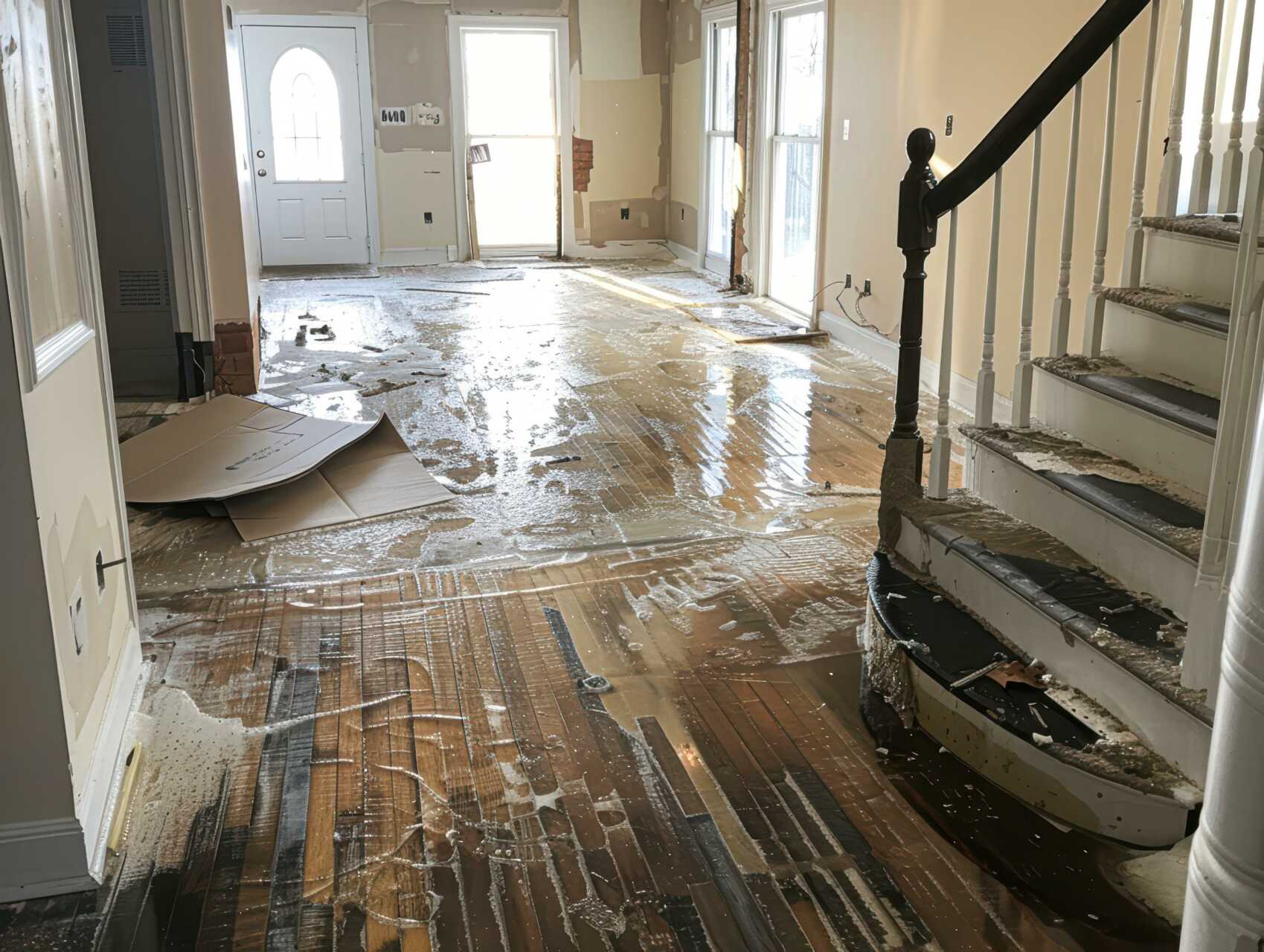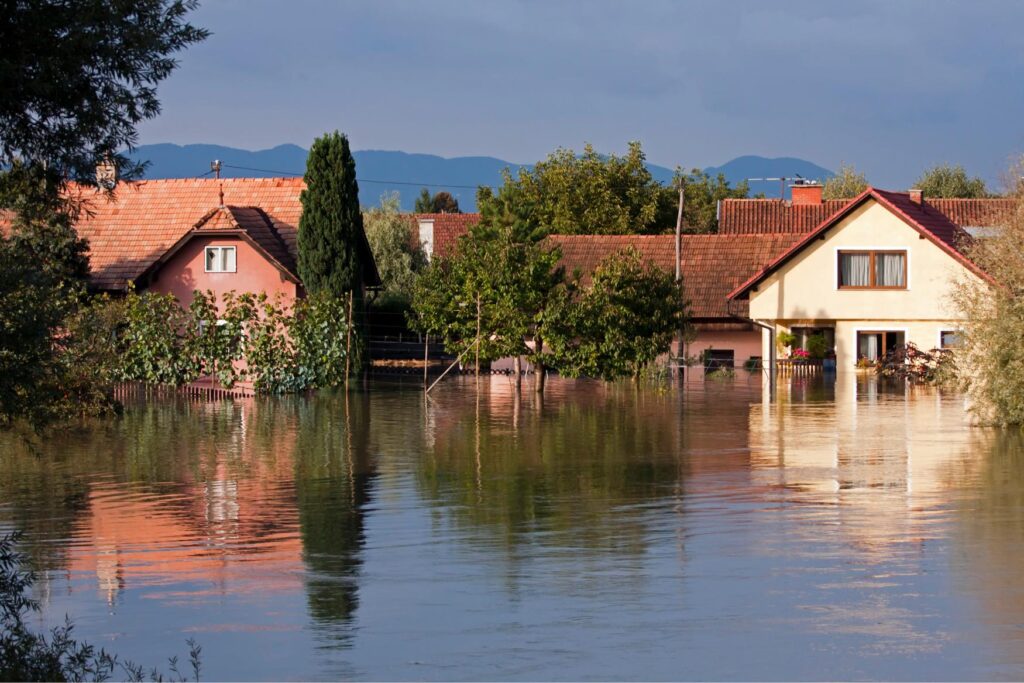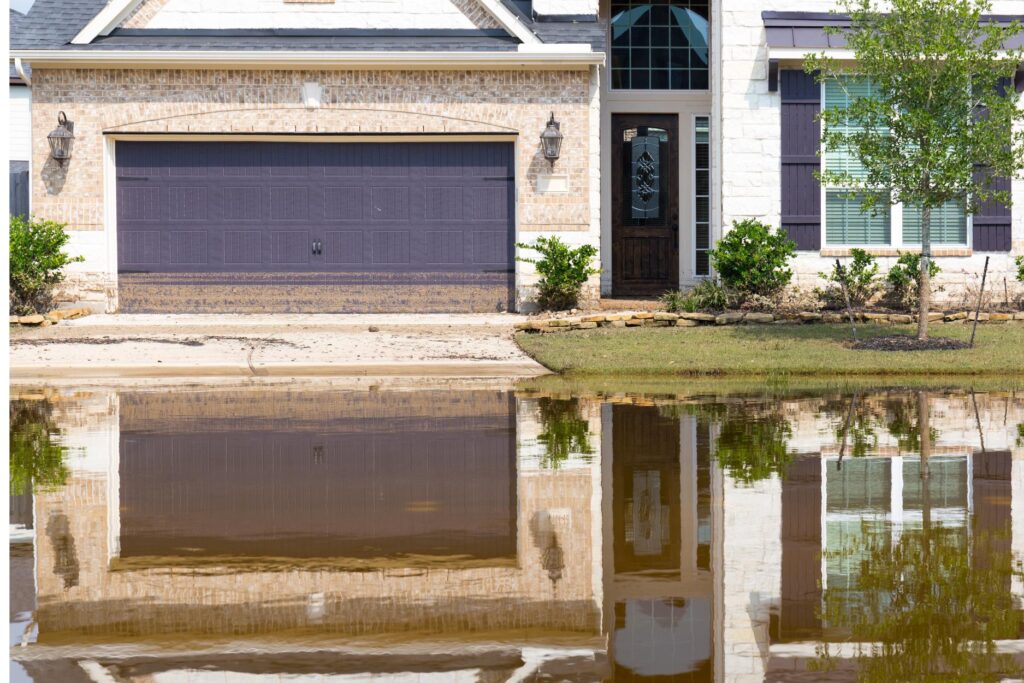Contents
To prevent mold after water damage, you need to be proactive. Inspect for leaks, and dry areas promptly, use dehumidifiers, remove wet materials, clean surfaces, monitor humidity levels, and seek professional help when necessary. Each step plays a crucial role in safeguarding your home from mold growth. By understanding these tips and taking action, you can effectively protect your living environment.
Key Takeaways
- Remove standing water promptly to prevent mold growth.
- Use dehumidifiers and fans to dry affected areas.
- Clean and disinfect surfaces thoroughly after water damage.
- Maintain optimal moisture levels between 30-50%.
- Seek professional help for extensive water damage or suspected mold growth.
Inspect for Water Leaks
To prevent mold after water damage, begin by thoroughly inspecting your property for any water leaks. Leak detection is crucial in preventing the growth of mold. Check all areas where water pipes run, such as under sinks, around water heaters, and along the walls. Look for any signs of water stains, discoloration, or dripping water. Regular plumbing maintenance is key to avoiding water leaks. Make sure to inspect your plumbing system periodically for any signs of wear and tear.
When inspecting for water leaks, pay close attention to areas prone to moisture accumulation, like basements and attics. These areas are more susceptible to mold growth due to the increased humidity levels. Additionally, check the seals around windows and doors for any gaps that could allow water to seep in. Proper insulation and sealing can help prevent water intrusion.
In bathrooms, inspect the caulking around bathtubs and showers. Over time, caulking can deteriorate, leading to water leaks. Replace any damaged caulking to prevent water from seeping into the walls or floors. Furthermore, ensure that all plumbing fixtures are properly sealed and in good working condition to prevent leaks that could result in mold growth.
Dry Affected Areas Promptly
Efficiently drying the affected areas promptly is crucial in preventing mold growth after water damage occurs. Mold prevention hinges on swift and thorough water restoration efforts. The key to success lies in rapid action.
Upon discovering water damage, your first step should be to remove any standing water using a wet vacuum or mop. Once the visible water is gone, focus on drying the area completely.
Open windows and doors to increase ventilation and aid in the evaporation process. Utilize towels and rags to soak up excess moisture, paying special attention to hidden nooks and crannies where water may have seeped.
To expedite the drying process, employ dehumidifiers in the affected areas. These devices work by extracting excess moisture from the air, helping to prevent mold growth.
Additionally, strategically placed fans can help circulate air and speed up evaporation. Remember, time is of the essence in water restoration – the longer water sits, the higher the likelihood of mold developing.
Use Dehumidifiers and Fans
Rapidly removing excess moisture is vital in preventing mold growth, and one effective method to achieve this is by using dehumidifiers and fans.
Dehumidifiers work by extracting moisture from the air, reducing humidity levels, and creating an environment less conducive to mold growth. They’re particularly useful in enclosed spaces where ventilation might be limited.
Fans, on the other hand, help increase air circulation, aiding in the evaporation of water and speeding up the drying process.
To effectively prevent mold after water damage, it’s recommended to place dehumidifiers strategically in the affected areas. Ensure they’re set up in a manner that allows for optimal moisture removal.
Additionally, using fans alongside dehumidifiers can significantly enhance the drying process, especially in larger spaces or areas with high humidity levels.
Remove Wet Materials
One crucial step in preventing mold after water damage is the removal of wet materials from the affected area. Mold prevention requires swift action and thorough water damage cleanup to eliminate the conditions that promote mold growth. When wet materials are left in place, they become breeding grounds for mold spores, leading to potential health hazards and structural damage. To effectively prevent mold, follow these steps for removing wet materials:
| Wet Materials to Remove | Instructions | Tools Needed |
|---|---|---|
| Carpets and Rugs | Lift the carpets and rugs from the floor. | Gloves, Trash bags |
| Upholstered Furniture | Remove upholstery for proper drying. | Screwdriver, Towels |
| Drywall and Insulation | Cut and remove wet sections promptly. | Utility knife |
| Wooden Furniture | Wipe excess water and move outdoors. | Cloth, Dolly |
| Clothing and Fabrics | Launder or dry clean to prevent mold. | Washing machine |
Clean and Disinfect Surfaces
To effectively prevent mold growth after water damage, thorough cleaning and disinfection of surfaces is essential. Mold prevention starts with removing any visible dirt or grime from surfaces. Begin by scrubbing hard surfaces with a mixture of detergent and water. Use a brush or sponge to ensure you reach all crevices.
After cleaning, it’s crucial to disinfect surfaces to kill any remaining mold spores. You can create a disinfecting solution by mixing one cup of bleach with one gallon of water. This solution is effective at killing mold on hard surfaces.
For porous materials like wood or fabric, it’s best to discard heavily contaminated items as mold can penetrate deep, and cleaning may not be sufficient. Non-porous materials such as glass, plastic, or metal can be effectively cleaned and disinfected. Pay special attention to areas that were directly affected by water, as these are the most likely spots for mold growth.
After cleaning and disinfecting, ensure the area is thoroughly dried out to prevent any lingering moisture that could promote mold growth. Adequate ventilation and the use of dehumidifiers can aid in drying out the space effectively.
Monitor Humidity Levels
To prevent mold growth after water damage, it’s crucial to monitor humidity levels in your environment. Use dehumidifiers effectively to maintain optimal humidity levels, typically between 30-50%.
Regularly check moisture levels in affected areas to ensure they’re within the recommended range for mold prevention.
Humidity Control Importance
Maintain proper humidity levels to prevent mold growth after water damage by consistently monitoring and controlling moisture in the affected area. Ventilation strategies play a crucial role in humidity control. Ensure adequate airflow by opening windows and using fans to circulate air, aiding in moisture prevention. Additionally, consider utilizing exhaust fans in high-humidity areas like bathrooms and kitchens to reduce dampness.
To effectively manage humidity, invest in a hygrometer to measure moisture levels. The ideal indoor humidity should range between 30% to 50%. If levels exceed this range, implement dehumidifiers to extract excess moisture from the air. Regularly check and empty the dehumidifier’s collection pan to prevent standing water, which can lead to mold growth.
Using Dehumidifiers Effectively
Properly monitor humidity levels using a hygrometer when utilizing dehumidifiers to effectively prevent mold growth after water damage. To maximize the efficiency of your dehumidifier, ensure regular maintenance. Clean or replace filters as needed to keep the unit running smoothly and to prevent mold buildup within the dehumidifier itself. This maintenance also contributes to energy efficiency, saving you money in the long run.
When it comes to placement, position the dehumidifier in the center of the affected area for optimal air circulation. Avoid placing it against walls or furniture, as this can hinder airflow and reduce its effectiveness. Additionally, set the dehumidifier to the recommended humidity level – usually between 30-50% relative humidity – to create an environment where mold struggles to thrive.
Checking Moisture Levels
Regularly monitor humidity levels using a hygrometer to effectively prevent mold growth after water damage. Moisture detection is crucial in implementing successful prevention strategies.
Here’s how you can effectively check moisture levels:
Use a Hygrometer: Purchase a quality hygrometer to accurately measure the humidity levels in your home. Place it in various rooms to identify areas with high moisture content.
Set Ideal Humidity Levels: Keep the humidity in your home between 30-50%. This range discourages mold growth and creates an inhospitable environment for spores to thrive.
Take Immediate Action: If the hygrometer indicates high humidity levels, take immediate steps to reduce them. Use dehumidifiers, increase ventilation, or fix any leaks to prevent moisture buildup.
Seek Professional Help if Needed
If you encounter extensive water damage or suspect mold growth in hard-to-reach areas, it’s crucial to seek professional help promptly. While DIY solutions can address some water damage and mold prevention tasks, certain situations require the expertise of professionals to ensure thorough remediation and prevention of mold growth.
Professional help is particularly essential when dealing with severe water damage that has affected structural elements of your home, such as walls, ceilings, or flooring. Water can seep into hidden areas, creating pockets of moisture conducive to mold growth. Professionals possess specialized equipment, like moisture meters and infrared cameras, to detect moisture levels accurately and identify hidden pockets of water that may lead to mold issues if left untreated.
Additionally, if you suspect mold growth but can’t visually confirm its presence, professionals can conduct mold testing to assess the situation accurately. Mold testing involves taking samples from different areas of your home and analyzing them to determine the type and concentration of mold present. Based on the results, professionals can recommend appropriate remediation strategies to address the mold infestation effectively.
Furthermore, professionals have the necessary training and experience to handle mold remediation safely. They follow industry guidelines and use proper protective equipment to prevent exposure to harmful mold spores during the remediation process. By entrusting the task to professionals, you can ensure thorough and safe mold remediation, protecting your home and your health.
Final Thoughts
Implementing these preventative measures can significantly reduce the risk of mold growth after water damage.
Mold can start to grow within 24-48 hours of water damage occurring.
By following these seven best tips, you can effectively protect your home and health from the harmful effects of mold.
Stay proactive and vigilant to prevent mold from taking hold in your living space.




